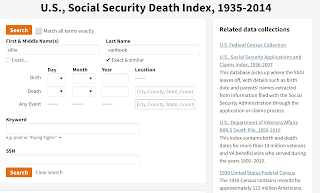“The
story of how my grandparents fell in love is better than any Disney movie” – Family Tree Magazine
Genealogical findings are very rewarding.
Each snippet of information that you are able to unearth about your ancestors
is a priceless! As you begin to accumulate records, photographs, stories, and
other artifacts, it is a good idea to decide how you would like to preserve
your research.
The first way to preserve your
research is to save records and photos
on the website or software that you use to perform your research. If you
use Ancestry or MyHeritage, you are easily able to save records, photos,
stories and other artifacts from your research. FamilySearch allows you to save
records, but not much else.
Starting a blog is another way that you may use to preserve
your research. Writing out the stories of your ancestors, allows you to bring them
to life and create a narrative of your family history, rather than simply
having a list of facts about their lives.
Preserving your genealogical research
can also be done through creating videos.
These videos can be narratives of your ancestors, or a sort of diary that you
create as you research.
Here is an example of someone who has
created videos of genealogical stories:
If you wanted to create a physical
representation of your genealogy research, you could create a binder or self-published booklet with stories
of your journey researching and of the lives of your ancestors, along with
photographs and copies of records.
While this is not a way to preserve
your research – it is always a good idea to save your records and photographs in
multiple places. Whether you save your research on a flash drive, your
computer files, Google photos, or another avenue, it is important to have records
saved in multiple places just in case of a technological or software issue J






